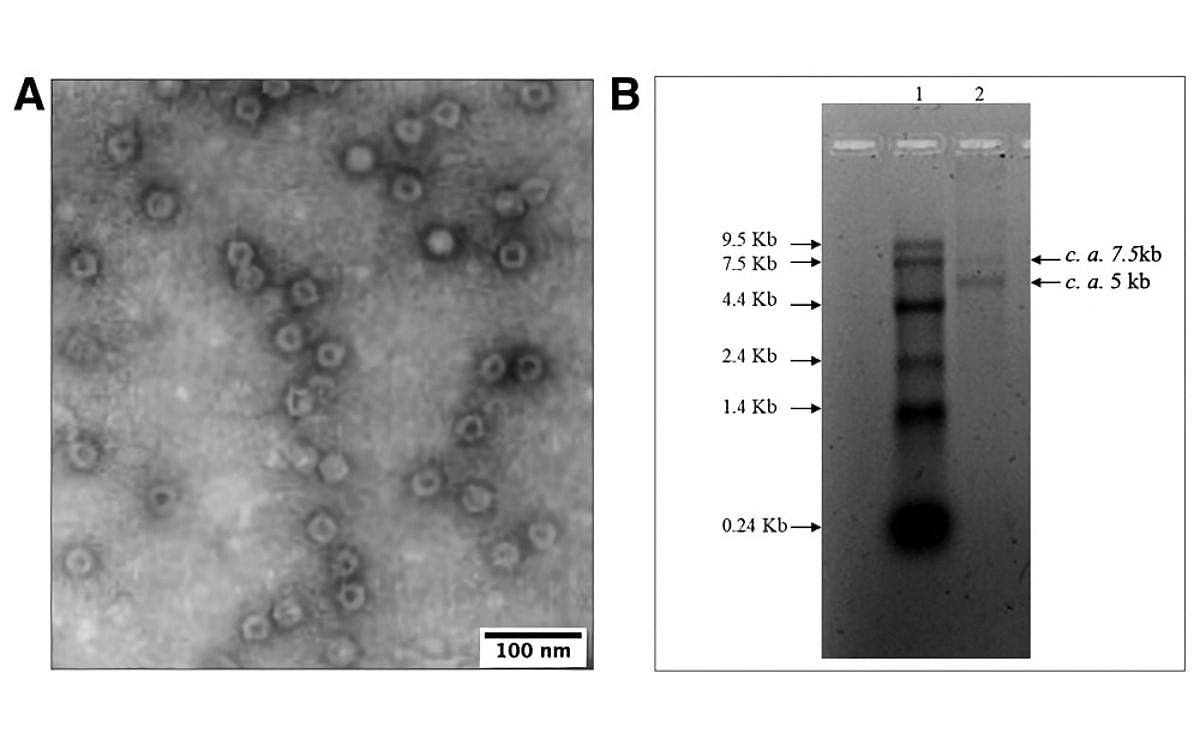A, Virus particles visualized in the transmission electron microscope (TEM); scale bar equals 100 nm. B, Electrophoretic migration pattern of nucleic acid extracted from purified virions of the virus coded SB26/29.
主标签
Potato rugose stunting virus, a newly characterized potato virus

In the 1990s, a previously uncharacterized disease of viral aetiology was observed in cultivated potatoes (Solanum tuberosum) in Southern Peru.
It was named potato rugose stunting disease (PRSD) and was reported to cause severe symptoms in infected potato plants, including mosaic and deformation of the leaves and stunting (EPPO RS 2006/237).
Studies showed that the disease was caused by an unknown isometric virus, which was provisionally coded SB26/29. This virus had been intercepted on potato in the Netherlands and in the USA. SB26/29 was categorized as a potential quarantine pest for the European Union by EFSA, but has not yet been added to the EU quarantine lists.
Recent research further characterized this virus and showed that it belonged to the genus Torradovirus and is a new species tentatively named potato rugose stunting virus (PotRSV).
It was named potato rugose stunting disease (PRSD) and was reported to cause severe symptoms in infected potato plants, including mosaic and deformation of the leaves and stunting (EPPO RS 2006/237).
Studies showed that the disease was caused by an unknown isometric virus, which was provisionally coded SB26/29. This virus had been intercepted on potato in the Netherlands and in the USA. SB26/29 was categorized as a potential quarantine pest for the European Union by EFSA, but has not yet been added to the EU quarantine lists.
Recent research further characterized this virus and showed that it belonged to the genus Torradovirus and is a new species tentatively named potato rugose stunting virus (PotRSV).
Like to receive news like this by email? Join and Subscribe!
Get the latest potato industry news straight to your WhatsApp. Join the PotatoPro WhatsApp Community!
Sponsored Content
Sponsored Content
Sponsored Content
Sponsored Content










